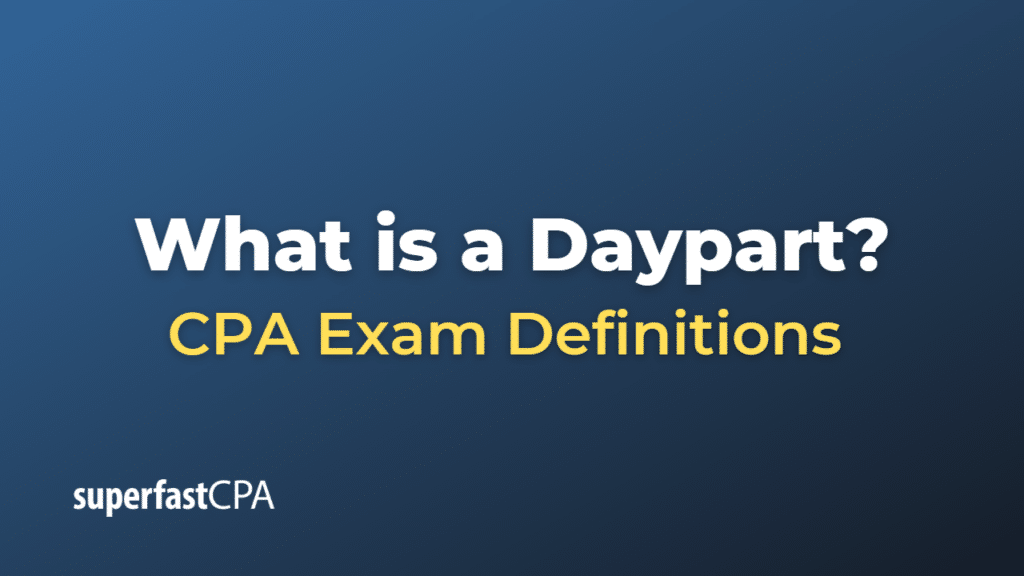Daypart
“Daypart” is a term used in broadcast media to refer to a specific segment of the day, typically divided into several standard blocks. It’s a way of breaking down the day’s broadcast schedule into different parts, each with its own demographic and programming.
The concept of dayparting is primarily used in radio and television programming and advertising. It helps advertisers target their messages to the right audience at the right time, and it helps broadcasters schedule their programming to attract the largest possible audience.
The typical dayparts include:
- Morning (or Breakfast) Drive (6 a.m. – 10 a.m.): This is when people are typically getting ready for their day or commuting to work. Radio stations often schedule their top personalities for this time, and news shows are common on television.
- Daytime (10 a.m. – 3 p.m.): This period often targets stay-at-home parents, retirees, and people who work non-traditional hours, with programming such as talk shows, soap operas, and game shows.
- Afternoon (or Evening) Drive (3 p.m. – 7 p.m.): This is another peak listening/viewing time, as people are often commuting home from work. News programs are common during this time.
- Prime Time (7 p.m. – 11 p.m.): This is typically the highest-rated period of the day, when the most people are watching television. Networks often schedule their most popular shows for this time.
- Late Night (11 p.m. – 2 a.m.): This period often includes late-night talk shows and adult-oriented programming.
- Overnight (2 a.m. – 6 a.m.): Fewer people are typically watching during this time, so programming may include infomercials, reruns, and news updates.
Keep in mind that these times are somewhat flexible and can vary based on the specific audience and region. For example, prime time tends to start and end earlier in rural areas and later in urban areas.
Example of a Daypart
Let’s consider an example of a television network and a local business owner who wants to advertise his product.
The business owner’s product is a new line of cookware, and his target audience is adults who are interested in cooking.
The television network offers several different dayparts for advertising:
- Morning (6 a.m. – 10 a.m.): The network airs a morning news show during this time. The audience is broad, but the business owner decides that this isn’t the best fit for his cookware ad because people may be more focused on news and less on products like his.
- Daytime (10 a.m. – 3 p.m.): During this period, the network airs a mix of talk shows and cooking shows. The business owner decides that the cooking shows would be an ideal place to advertise his cookware, as the viewers are likely to be interested in cooking and may be receptive to his product.
- Afternoon Drive (3 p.m. – 7 p.m.): The network airs syndicated sitcom reruns during this time. The business owner decides that this isn’t the best fit for his ad because the audience is not specifically interested in cooking.
- Prime Time (7 p.m. – 11 p.m.): During prime time, the network airs its most popular scripted shows. The audience is large, but the advertising rates are also much higher. The business owner decides that this isn’t the best use of his advertising budget.
- Late Night (11 p.m. – 2 a.m.) and Overnight (2 a.m. – 6 a.m.): The network airs a mix of late-night talk shows and infomercials during these times. The business owner decides not to advertise during these dayparts because fewer people are watching.
By understanding the concept of dayparts, the business owner can make an informed decision about when to run his ads to best reach his target audience. He chooses to run his ads during the daytime daypart, specifically during the cooking shows, to maximize the effectiveness of his advertising.













